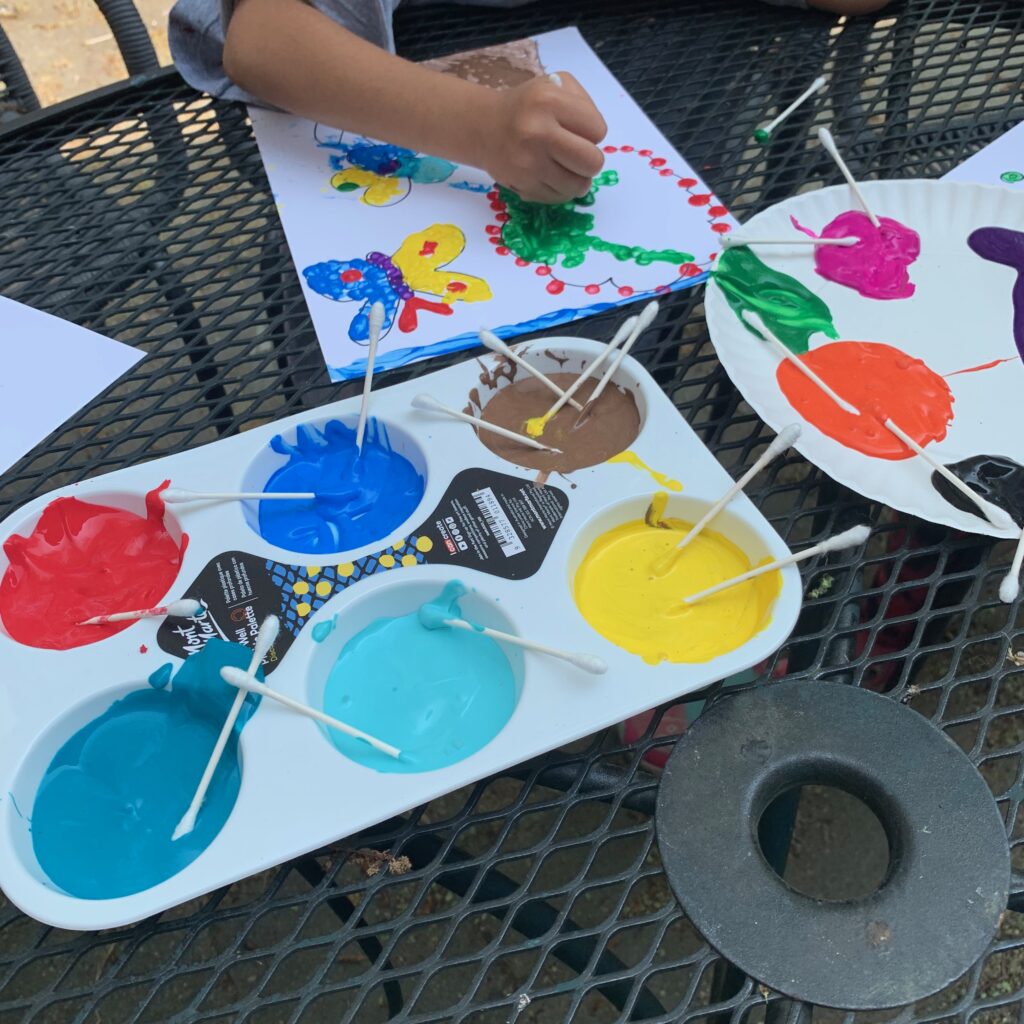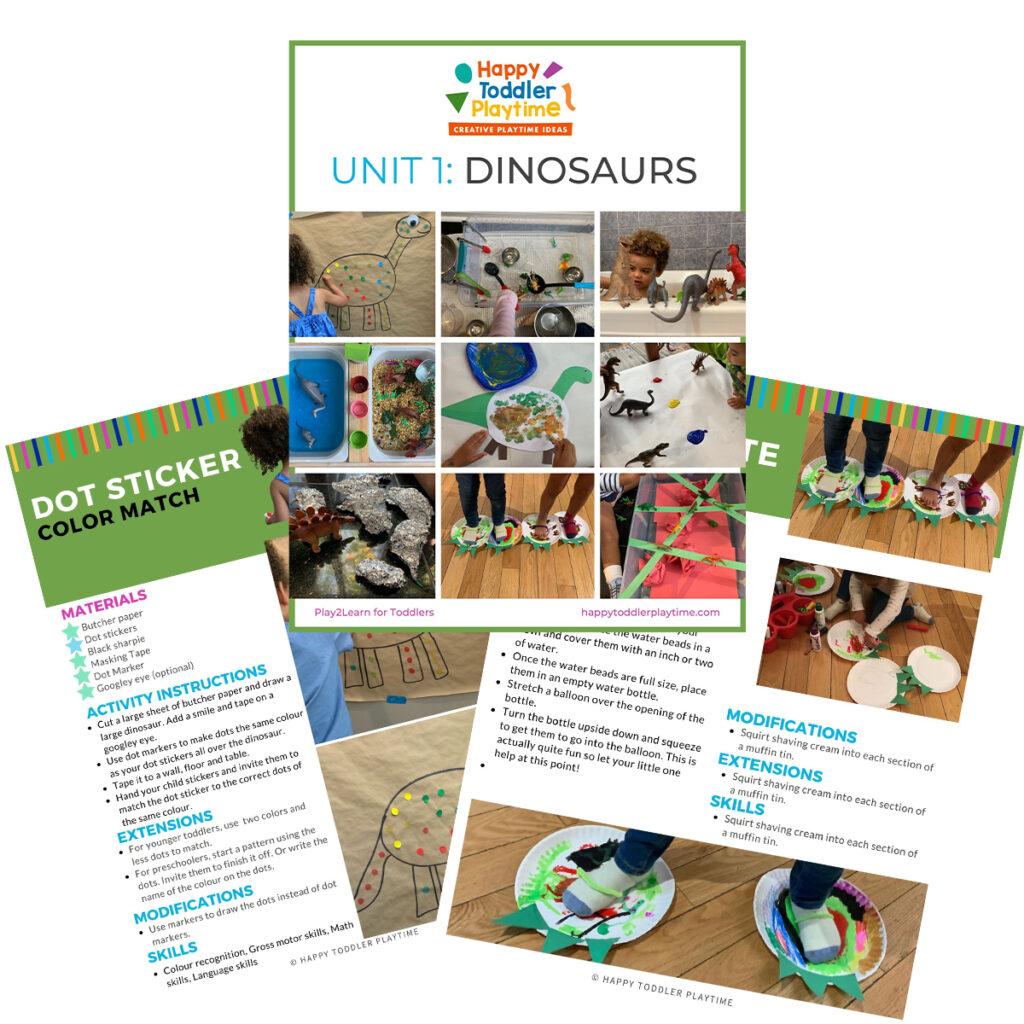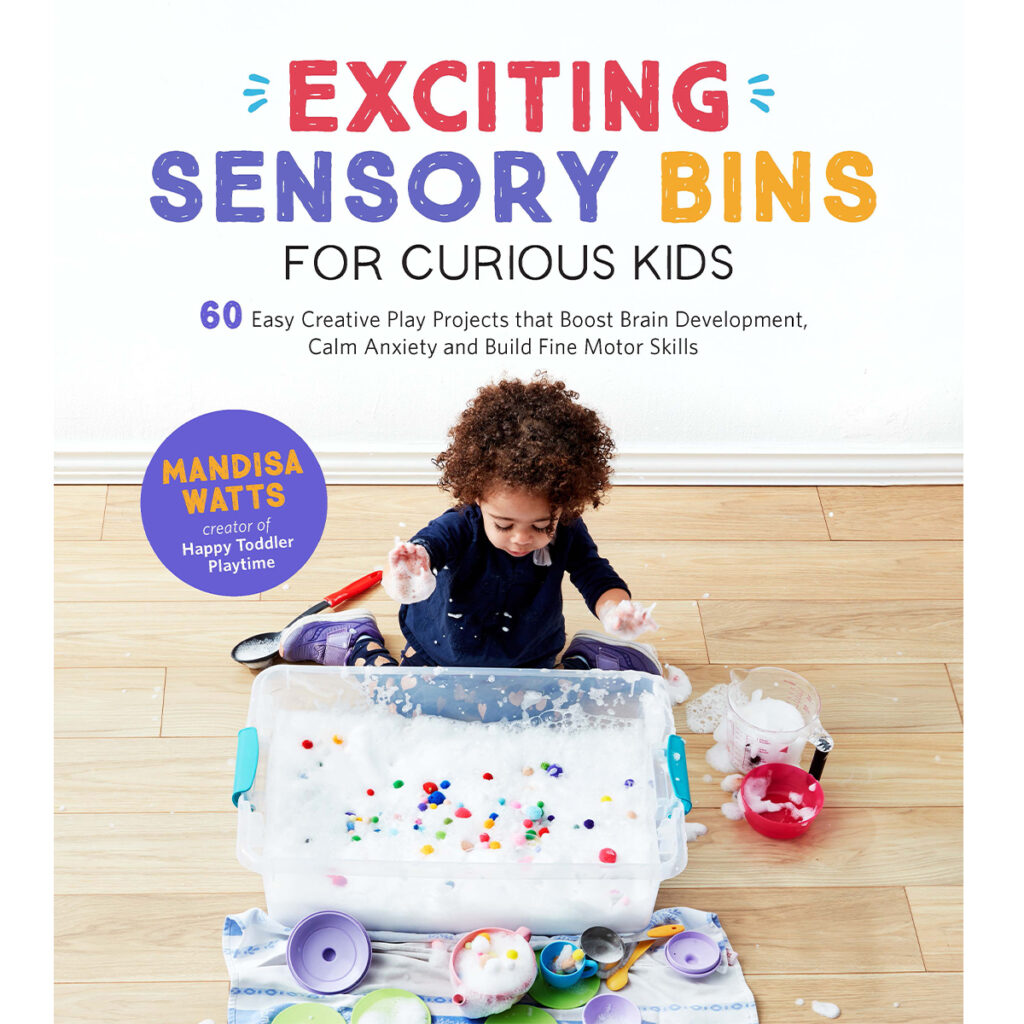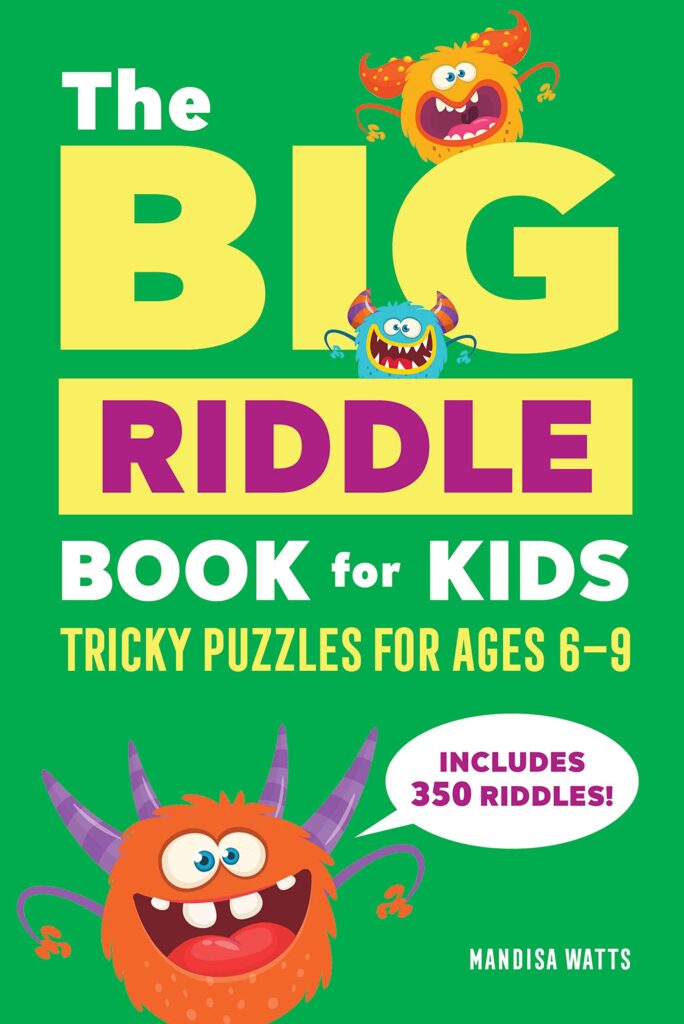Unleash your child’s creativity and introduce them to the mesmerizing world of pointillism painting – a technique that transforms simple dots into vibrant masterpieces! Here we’ll dive into the wonderful world of pointillism, a painting technique that involves creating images through the careful placement of small dots. Using washable kids’ paint and a trusty q-tip, your little artist will embark on a colorful journey of artistic exploration. So, gather your materials and let’s get ready to create stunning works of art, one dot at a time!
What is Pointillism?
Pointillism is a unique and captivating painting technique that involves creating images using tiny dots of color. Think of it as building a picture using thousands of colorful dots, like a puzzle coming together. This technique creates a beautiful visual effect where colors blend together when viewed from a distance, creating a sense of depth, light, and texture.
Imagine if you were to take a step back from a pointillist painting – suddenly, those seemingly random dots become a vibrant, cohesive image that’s both mesmerizing and impressive!
Here’s how it works: Instead of using a brush that’s all covered in paint, you dip the end of a stick, like a tiny paintbrush or a q-tip, into paint. Then, you carefully touch the paper with that dot of paint. But guess what? You don’t just make one dot – you make lots and lots of dots, like a puzzle coming together!
Now, here’s where the magic happens. When you put these dots super close to each other, they start to mix together in your eyes, just like mixing colors on a palette. You can make your picture look bright, colorful, and so interesting, all with these tiny dots!
Famous Pointillism Artists
Pointillism originated in the late 19th century and was pioneered by artists Georges Seurat and Paul Signac. These artists believed that by placing dots of pure color side by side, the viewer’s eye would blend them optically to see the intended colors. This technique was groundbreaking at the time and introduced a new way of portraying light and color in art.
Georges Seurat’s most famous work, “A Sunday Afternoon on the Island of La Grande Jatte,” is a prime example of pointillism. The meticulous placement of tiny dots brings the scene to life with a sense of vibrancy and luminosity.
Another notable pointillist artist is Paul Signac, who continued to develop and refine the technique after Seurat’s death. Signac’s works, like “The Port of Rotterdam,” showcase his mastery of color theory and his ability to capture the essence of light through intricate dot placement.
Pointillism had a significant impact on the art world, influencing other artists and movements. It paved the way for a greater exploration of color theory and how colors interact with each other, both up close and from a distance.
In the end, pointillism is a testament to the power of patience, precision, and the magic that can happen when you look at things from a different perspective.
WILL YOU POINTILLISM PAINTING WITH YOUR CHILD? Pin it for later!

Materials
Before we begin, make sure you have these materials for your Pointillism Painting adventure:
- Washable kids’ paint (assorted colors)
- Q-tips (cotton swabs)
- Paper or canvas (for painting surface)
- Palette or paper plate (for paint mixing)
- Water and paper towels (for cleaning q-tips)
- Smock or apron (to protect clothing)
- Imagination and creativity!
Unleash the Dots
- Select Your Colors: Squeeze a variety of washable kids’ paint onto a palette or paper plate. Encourage your child to choose a range of colors that inspire them and suit their artistic vision.
- Prepare the Canvas: Set up the paper or canvas as the painting surface. It’s a good idea to secure the paper with tape to prevent it from moving while your child paints.
- Dip and Dab: Dip the cotton end of a q-tip into one color of paint. Begin dabbing the q-tip onto the paper to create a series of dots. Your child can experiment with different pressures and patterns to vary the size and intensity of the dots.


- Building the Image: As your child continues to add dots, they’ll notice that the colors blend and mix optically to form images and shades. Encourage them to take their time and enjoy the process of building up the image.
- Experiment and Explore: Pointillism painting is all about experimenting! Your child can create gradients by layering dots of different colors, or they can use contrasting colors to make their images pop.




Benefits of Pointillism Painting for Kids
- Fine Motor Skills: The precise nature of pointillism encourages fine motor skills and hand-eye coordination.
- Patience and Focus: As each dot is placed intentionally, pointillism fosters patience, focus, and attention to detail.
- Color Theory: Kids can experiment with color mixing and blending, helping them grasp essential concepts of color theory.
- Creativity and Imagination: Pointillism encourages children to explore their creativity and imagination as they transform dots into intricate images.
- Pride in Accomplishment: Completing a pointillism artwork boosts a child’s confidence and sense of accomplishment.


Pointillism painting is a captivating technique that transforms simple dots into intricate, visually stunning artworks. Through the magic of washable kids’ paint and q-tips, your child can explore their creativity, experiment with color, and enjoy the meditative process of placing dots one by one. This artistic adventure nurtures fine motor skills, patience, and an appreciation for the beauty that can emerge from small, deliberate actions. So, set up your creative space, prepare your materials, and watch as your child’s imagination comes to life through a world of colorful dots and delightful artistry!
Age Suitability
This activity is good for toddlers aged children 18 old and up with adult assistance. My kids are 4, 4, and 7.
Mess Level
The mess level for this activity is medium.
Difficulty to Create
Low.
Skills Developed
Language development, shape recognition, color recognition, hand-eye coordination, fine motor skills, imaginative play, creativity.
Toddler and Preschooler Curriculums, Books & TV Show!
Play2Learn Toddler & Preschool Programs for Curious Toddlers
There is no limit to your toddler’s energy and curiosity. That energy and curiosity although a joy can be challenging at times. Their interest in just about everything around them is what makes them great learners. One and two year olds can soak up so much just from their senses!
But as a teacher or parent that thirst for learning can be exhausting. That is why I created this toddler and preschooler program. To help you get the most out of this time with your curious toddler without having to come up with creative ways to play and interact with them.
Play2Learn for Toddlers includes 20 Units for toddlers. Each 2-week toddler unit has 20 super easy to set up and engaging activities for toddlers 18 months to 3 years.
Play2Learn Preschool which includes 20 Units for preschoolers. Each 2-week preschoolers unit has 20 unique and easy to set up and engaging activities for preschoolers 3 years to 5 years. That’s over 800 learning activities for your toddler and preschooler at your fingertips! So many ideas you and your child will never be bored again!
These toddler and preschool lesson plans and activities will definitely keep you and your toddler and preschooler busy playing and learning!
Click here for more information: Play2Learn

Designed for toddlers 18 months and up.
Book: Exciting Sensory Bins for Curious Kids
Did you know I wrote a book of sensory bins? Click here for more information Exciting Sensory Bin for Curious Kids. Or grab your copy at Amazon.
Boring afternoons are made exciting with awesome animal-based bins, like Salty Shark Bay or Yarn Farm. Pretend play bins like Birthday Cake Sensory Play or Bubble Tea Party encourage creativity and imagination. And your kids will have so much fun they won’t even know they’re getting smarter with STEAM (science, technology, engineering, art and math) activities like Sink or Float Soup, Magnetic Letter Hunt or Ice Cream Scoop and Count.
Designed for toddlers 18 months and up.

Book: Super STEAM Activity Book for Kids
Learning all about science, technology, engineering, art, and math sets kids up for scholastic success―and it can be so much fun! Watch kids enjoy building STEAM skills as they color friendly fish, help water find its way to tree roots, solve math problems with mazes, and more.
Find out more and grab your copy here.
Designed for preschoolers 3 years old and up.

Book: Big Book of Riddles for Kids
Riddle me this: What’s an exciting way to practice critical thinking while having a blast? The Big Riddle Book for Kids, of course! From hilarious puns to tough brain teasers, kids can build problem-solving skills with hundreds of riddles tha. t show them how to think outside the box.
- 350 riddles for kids—Have hours of fun with riddles, puns and jokes, and math and logic puzzles that’ll get their wheels turning!
- Level up their skills—Riddles get trickier as kids progress through the book, challenging them as they get better at solving puzzles!
- Double-check their work—Kids can check their answers in the back of the book with a handy answer key.
Help children expand their minds while having fun with this puzzle book for kids!
Designed for kids ages 6 years old and up.

TV Show: Curious Crafting
I’m so excited to share my crafting TV show Curious Crafting which launched in July 2022 on TVOkids and TVOkids YouTube! Season 2 airs in the summer of 2023! We were also nominated in 2023 for Best Live Action Preschool Series by the Youth Media Alliance Awards of Excellence.
Set in the ultimate crafting space, Curious Crafting is a short form pre-school age series about the joy of making crafts. I lead a rotating cast of adorable little preschoolers (including my own) making magic out of common household objects.
In each episode we transform recycled items into magical crafts like a milk carton school bus, paper bag puppet or cotton pad turtle. The crafters learn and laugh their way through each activity while demonstrating what their young imaginations can create.
Curious Crafting shares the adventure and joy of making art with takeaway lessons for creating crafts at home.
This show designed for toddlers and preschoolers 2.5 years old and up.
WILL YOU POINTILLISM PAINTING WITH YOUR CHILD? Pin it for later!





